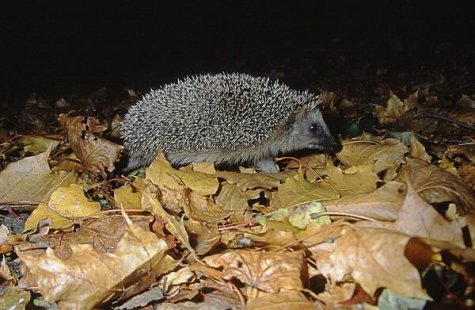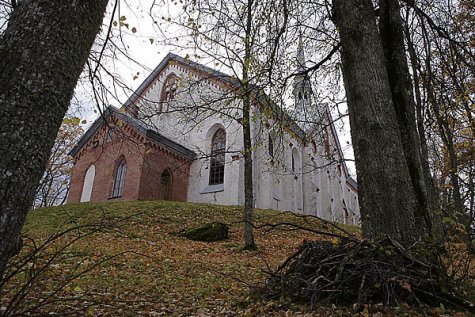Pincushion business
Photos: Arne Ader
Translation: Liis
Hedgehog under a maple
Hedgehog Harilik siil Erinaceus europaeus
It is just the time in autumn to fatten up and collect a fat layer under the skin. Rain has been pouring down hard this year, the ground is dank and the earthworms hiding under fallen leaves – there are goodies to feast on in unraked areas. The place where to spend the winter sleep should be known, unless of course it is too wet, and sometimes one might by chance stumble across a better spot.
The first hedgehog litter that was born in May became independent in July. Today they live on their own, an almost adult hedgehog life. The second litter was born in August, with five to seven young – they will spend their hibernation with the female who takes care of the young alone.
Hedgehogs are not daytime movers, instead twilight and night animals. Their eyesight is poor but sense of smell is good – this is why they move by fits and starts, stopping frequently and sniffing the environment.
Night frosts have left their mark, the winter nest is being lined with dry leaves and grass. A site on dry and peaceful ground is chosen – a heap of branches, the corner of a shed ... Hedgehog friends put a wooden box upside down (tar paper or a piece of plastic sheet as roof on top, the sides are left uncovered so that the winter nest will not get muggy and mouldy; snow “breathes”), a pile of dry leaves under the box. Quite fancy entrances with a corridor are built too for the winter nests – important that harassing dogs and cats cannot get in. If you suspect that hedgehogs winter on your land in some pile of branches, the centre of the pile can be covered with some water-proof material that is secured with something at hand. Melting snow or rain in winter, and a wet bed because of that, is the cause of death of many hedgehogs.
A branch pile in a garden corner suits hedgehogs as nest. Otepää churchyard










